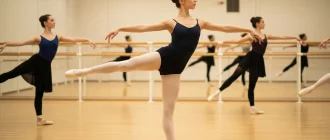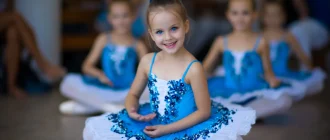Dancers’ hands are crucial for ballet, making them expressive and graceful in performances. Discover essential tips and techniques to master your hand movements in ballet hands in this article.
Key Takeaways
- Hands are crucial for conveying emotions and enhancing the artistry of dance; proper positioning can elevate performance.
- Common mistakes, such as pinched fingers and broken wrists, can hinder fluidity, but techniques like warm-ups and wrist rolls help prevent these issues.
- Incorporating imagination, cultural influences, regular practice, and care for the hands all contribute to more graceful and expressive movements.
Dancer Hands Podcast
| Technique | Description | Benefits | Exercises/Practices |
|---|---|---|---|
| Finger Articulation | Emphasize movement in each finger to create fluidity | Enhances expressiveness and fluidity | Finger isolations, piano-playing motions |
| Wrist Flexibility | Develop flexibility in the wrists for smoother transitions | Allows for elegant hand transitions | Wrist circles, figure eights |
| Arm Extension | Properly extend arms to complement hand movements | Creates longer lines and improves posture | Arm stretches, reach, and pull exercises |
| Hand Positions | Master classical hand positions (e.g., ballet positions) | Adds sophistication and style | Practice positions like arabesque and port de bras |
| Relaxation Techniques | Avoid tension in hands and fingers | Prevents stiffness and awkward movements | Hand shaking, stress ball squeezing, and releasing |
| Coordination with the Body | Synchronize hand movements with body and footwork | Achieves harmony and overall grace | Slow practice integrating hand and body movements |
| Expression through Hands | Use hands to convey emotion and storytelling | Enhances performance impact | Practice emotive gestures, mirror exercises |
| Cultural Hand Gestures | Learn hand gestures specific to dance styles (e.g., flamenco, Bharatanatyam) | Adds authenticity to dance style | Study and practice style-specific hand movements |
| Finger Strengthening | Increase strength for better control | Improves precision and stamina | Finger push-ups, resistance band exercises |
| Spatial Awareness | Be conscious of hand positioning about the body and space | Prevents unwanted collisions and awkwardness | Practice in front of mirrors, and video recording |
| Smooth Transitions | Ensure seamless movement from one hand position to another | Maintains flow and grace | Slow motion practice, focus on connecting movements |
| Musicality | Align hand movements with the music rhythm and accents | Enhances synchronization with music | Count music beats, practice with a metronome |
Understanding the Importance of Hands in Dance

In dance, hands play a crucial role in artistry and emotional expression. A dancer’s hand positioning can dramatically affect the visual lines, transforming movements into captivating art. They convey emotions, adding layers of meaning that resonate with the audience.
However, poor hand positioning can lead to pinched fingers and frozen shapes, detracting from the dancers’ overall grace and fluidity. Maintaining proper form and aesthetic appearance is essential for a graceful presentation that complements the dancer’s body.
Loosening connective tissue is crucial for fluid movement, especially in colder temperatures when muscles are more vulnerable and connective tissue is prone to tension. Mastering proper hand techniques is vital for any dancer looking to elevate their performance.
The Role of Middle Finger Alignment
Aligning the point fingers of the middle finger, though a small detail, can greatly enhance the visual aesthetics of a dancer’s hand positions. Proper alignment and finger position make hand movements more graceful and fluid, which improves their overall appearance.
This alignment also contributes to the visual flow, making movements seamless and connected. Such a subtle adjustment in position can significantly enhance a dancer’s body performance, highlighting the importance of attention to detail.
Gentle Wrist Rolls for Flexibility
Incorporating slow, gentle wrist rolls into your practice routine is a simple yet effective way to maintain flexibility and achieve a full range of motion in the wrists. These exercises help ensure your wrists feel fluid and you can execute soft, graceful movements.
Regular wrist rolls significantly enhance flexibility, prevent stiffness, and promote a more fluid flow in dance movements; wrist feel is essential for achieving fluidity in ballet.
Cultural Influences on Hand Movements
Different specific cultural dance forms bring unique hand movements and expressions that enrich the overall presentation of the dance. These specific cultural dance forms introduce gestures and movements that add depth and authenticity to the performance, allowing dancers to tell distinct stories through their hands and bodies.
The unique hand movements from various world cultural dances enhance the performance’s expressiveness and energy, adding a layer of emotional depth that captivates the audience. Incorporating these influences can significantly elevate your dance technique and artistry.
Common Mistakes and How to Avoid Them

Even the most experienced dancers can fall into bad habits that hinder their performance. Cold temperatures can cause muscles to become involuntarily tense, making it essential to warm up the hands and wrists to counteract this tension and facilitate smooth movement during dance.
Common mistakes, such as pinched fingers, broken wrists, and stuck-out thumbs, can detract from the fluidity and grace of a dancer’s movements. Recognizing and avoiding these errors is crucial for maintaining the elegance of dancing and hand movements.
Excessive screen time can lead to repetitive strain injuries, affecting the fluidity of hand movements. Reducing device usage and incorporating breaks during practice can help prevent such issues, allowing dancers to maintain the flexibility and fluidity of their hand movements.
Pinched Fingers
Pinched fingers occur when the fingers, thumb, and palm are held too close together, resulting in stiff and unnatural hand and arm movements. This can break the visual lines that dancers strive to create, detracting from the energy and overall aesthetic of the performance.
Dancers should practice maintaining a slight space between their fingers to avoid pinched fingers, which improves the aesthetic quality of the dance and allows ballet dancers to perform more fluid, expressive hand movements.
Broken Wrists
Broken wrists occur when dancers let their wrists and elbows droop instead of maintaining an extended line from their arms to their palms and fingertips. This habit can significantly detract from a dancer’s form and overall performance.
To achieve graceful hand movements, dancers should strive for a wrist feel of a continuous flow from their arms through their wrists to their fingertips. Focusing specific attention on wrist alignment during regular practice can prevent issues like broken wrists and enhance overall dance performance.
Stuck Out Thumbs
In ballet, ‘Hamburger Hands’ refers to a spread thumb position that resembles a fist holding a large hamburger. This issue can be caused by stress or the development of bad habits. Staying aware of thumb positioning and practicing proper thumb alignment can help dancers avoid this common mistake, especially when considering Balanchine’s hands.
Keeping your thumbs aligned with the soft palm rest point and the shape of your palm on the top-hand side enhances the overall fluidity and grace of your top-hand movements.
Techniques to Improve Hand Movements
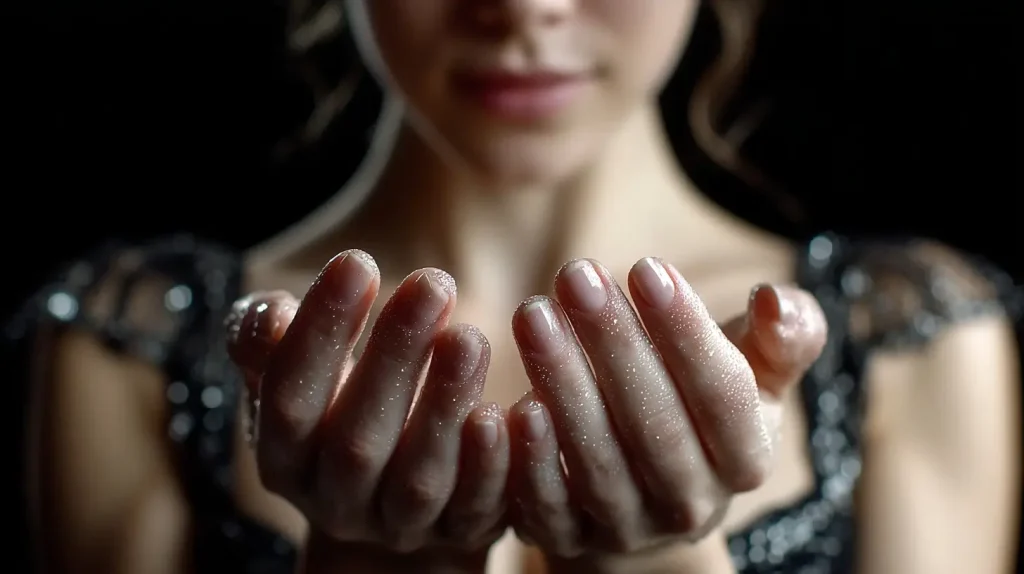
Improving hand movements in dance involves a combination of practice, proper techniques, and imagination. The positioning of hands and arms is fundamental in ballet, enhancing the elegance and emotional expression of movements. Dancers can achieve fluidity and grace in their performances by incorporating specific exercises and visualizing movements.
Warm Up Your Hands and Fingers
Warming up hands, feet, arms, shoulders, and fingers is essential for dancers to prevent tension and prepare colder muscles for performance. Colder temperatures can lead to ‘hamburger hands and feet’ if muscles haven’t been properly warmed up.
A proper warm-up routine, starting with exercises to loosen up, such as gentle wrist and thumb rolls, flexing hands, and scrunching fingers, along with a mild stretch, significantly enhances hand performance in dance, maintaining flexibility and fluidity.
Fine-Tuning Exercises
Fine-tuning exercises are designed to improve finger muscle precision and body awareness through varied speeds and orders. Varying speeds and directions in finger movement practice help improve control and precision.
Quickly doing the thumb while using the other four fingers and touching each finger to the thumb allows the other four fingers to move at varying speeds, enhancing finger muscle control, breath, and overall body awareness. These exercises are vital for achieving the delicate and precise hand movements required in dance.
Reshape the Hand
Reshaping the shape of the hand in life and dance is taught in the same way as enhancing flexibility and avoiding repetitive motions. Activities such as feeling the shape of objects, gripping, and releasing can help shape the hand in life.
Exploring different hand shapes during practice improves flexibility and expression. Engaging with various bodies of diverse shapes and textures prevents repetitive movement habits and enhances fluidity.
Incorporating Imagination and Artistic Expression
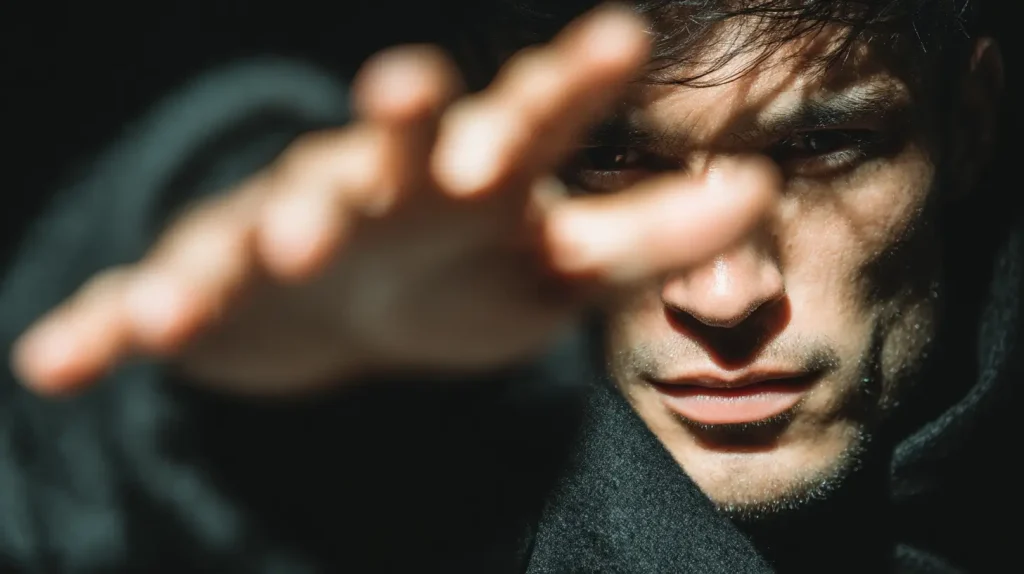
Imagination enhances dance performance by enabling dancers to imagine and visualize their movements. Hand gestures are a vital form of communication in dance, allowing dancers to express emotions and convey narratives.
Visualization techniques enhance the effectiveness of hand movements in dance, combining technical practice with imaginative expression, leading to more refined and expressive hand movements.
Imagining Artistic Movements
Imagining artistic movements helps reduce stiffness in dancers’ hands, contributing to more fluid performances. Dancers can apply visualization techniques by mentally rehearsing their movements before stepping onto the floor. Incorporating imagination into practice enhances overall hand movements and ballet technique.
This mental rehearsal is a powerful tool for achieving the desired fluidity and expressiveness of dance and enhancing muscle memory.
Using Flamenco for Wrist and Finger Placement
Flamenco techniques significantly contribute to improving wrist and finger placement in ballet dancers. By incorporating flamenco elements, dancers can achieve greater expressiveness in their hand movements. These techniques foster a deeper awareness of wrist and finger movements, enriching ballet performance and enhancing overall artistry.
Practical Tips for Everyday Practice
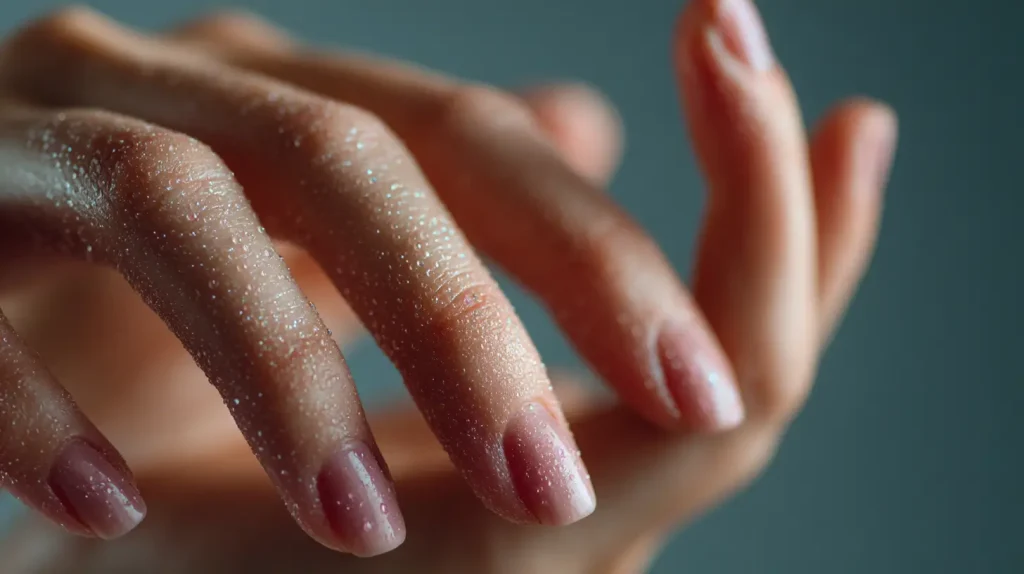
Practical tips in daily practice can significantly enhance hand movements. Practicing at various tempos improves coordination, muscle memory, and breath control. Activities like clay modeling help develop diverse hand shapes and flexibility.
Limit Device Usage
Excessive device use causes fatigue and cramping in dancers’ hands and wrists. Proper care is essential for enhancing technique, artistry, and grace in dance.
Limiting device use helps counteract the negative effects on dance performance. Reducing screen time helps maintain fluidity and flexibility in hand movements.
Shake It Up
Regularly shaking your hands keeps them and your wrists fluid and helps improve blood flow to joints and colder muscles. Shaking hands is a simple exercise that greatly enhances a dancer’s overall movement quality.
Incorporate handshaking into daily ballet practice to maintain hand health and improve your technique. This simple exercise emphasizes fluidity and enhances expressive potential in dance performance.
Regular Breaks and Mild Stretching
Regular breaks during practice help maintain flexibility in the hands and wrists, allowing dancers to perform better. Taking breaks can also reduce fatigue and prevent overuse injuries commonly associated with prolonged dancing.
Brief stretching routines during breaks enhance blood circulation, which benefits muscles and helps with recovery. During practice sessions, simple wrist circles and finger stretches help keep the muscles flexible.
Summary
In summary, mastering hand movements in dance is essential for enhancing a performance’s overall artistry and emotional expression. From understanding the importance of proper hand positioning to incorporating practical exercises and imagination, there are numerous ways to improve hand movements in dance.
By avoiding common mistakes, practicing specific techniques, and integrating artistic body expression, dancers and teachers can achieve fluidity and grace in their performances. Remember, the key to mastering dancer hands and student bodies lies in consistency, attention to detail, and the willingness to explore new techniques.
Frequently Asked Questions
Why is middle finger alignment important in dance?
Middle finger alignment is crucial because it enhances the elegance of hand positions, contributing to your dance movements’ fluidity, energy, and visual appeal. It can truly elevate your performance!
How can I avoid pinched fingers while dancing?
Keep a slight space between your fingers during movements to avoid pinched fingers while dancing slowly together. This protects your fingers and enhances the overall elegance of your position and dance.
What are ‘broken wrists’ in dance, and how can I prevent them?
To prevent ‘broken wrists’ in dance, maintain a straight line from your arms through your shoulders, neck, and wrists to your fingertips and incorporate wrist and arm alignment exercises into the rest of your routine. Keeping your arms and wrists engaged will help you avoid drooping and improve your overall performance.
How do flamenco techniques help with wrist and finger placement in ballet?
Flamenco techniques enhance your wrist articulation and finger movements, improving your ballet expressiveness and overall placement. This blend and a full range of styles can give your ballet a unique touch!
What are some practical tips for maintaining hand flexibility in dance?
To keep your arms and hands flexible for dance, try to limit your device usage, regularly shake them out, and take breaks to rest and stretch gently. These simple habits will help your muscles stay limber and prevent strain.
What are the key differences between Vaganova, Cecchetti, and Balanchine hand styles?
Vaganova emphasizes elongated, expressive fingers with a gentle cascade, often with the thumb close to the middle finger. Cecchetti focuses on a more restrained hand shape with softly grouped fingers, maintaining a calm and economical style. Balanchine’s technique features more open hands with separated fingers, creating a stylized, expansive look.
How can I prevent my hands from becoming stiff or claw-like during performances?
To avoid stiffness, practice maintaining a relaxed yet engaged hand shape. Visualize energy flowing through your fingertips, and regularly check in with a mirror to ensure your hands remain soft and expressive. Incorporating hand-specific exercises can also help develop muscle memory for graceful movements.
Are there specific exercises to improve hand articulation in ballet?
Finger isolations, wrist circles, and gentle stretching can enhance hand articulation. Holding small objects like a stress ball during practice can help maintain the desired hand shape and build muscle control.
How does hand positioning influence the overall line and aesthetic in ballet?
Proper hand positioning extends the line of the arms and contributes to the fluidity and grace of movements. Misaligned or tense hands can disrupt the visual harmony and detract from the performance’s elegance.
What role do hands play in conveying emotion and storytelling in ballet?
Hands are vital in expressing emotions and narratives in ballet. Subtle gestures, such as the tilt of a wrist or the extension of fingers, can convey feelings like longing, joy, or sorrow, enhancing the storytelling aspect of the performance.
How can I develop consistent hand placement across different ballet styles?
Studying various ballet techniques and understanding their unique hand positions is essential. Regular practice, instructor feedback, and observing professional dancers can help you adapt and maintain consistency in hand placement across styles.
Is it common for male and female dancers to have different hand styles?
While the foundational principles of hand technique apply to all dancers, stylistic differences can exist. Male dancers may adopt a more robust or understated hand style, whereas female dancers often emphasize delicacy and fluidity. However, these distinctions are not strict rules and can vary based on choreography and artistic interpretation.
What are the common mistakes dancers make with hand positioning?
Common errors include overly stiff fingers, splayed or clenched hands, and a lack of coordination with arm movements. These issues can break the line and distract from the performance. Awareness and targeted practice can help correct these habits.
How important is finger spacing in achieving the correct hand shape?
Finger spacing is crucial for a natural and elegant hand shape. Fingers should be gently separated, with the middle finger often leading the line. Overly spread or tightly closed fingers can appear tense and disrupt the visual flow.
Can hand exercises improve overall arm coordination in ballet?
Yes, hand exercises can enhance proprioception and control, leading to better coordination with arm movements. Strengthening the hands contributes to more precise and expressive port de bras.
How do cultural influences affect hand styles in different ballet schools?
Cultural aesthetics and traditions influence the stylistic nuances of hand positions in various ballet schools. For example, Russian ballet often emphasizes expressive, flowing hands, while other schools may prioritize clarity and restraint.
What is the significance of the thumb’s position in ballet hand technique?
The thumb should be relaxed and positioned close to the fingers, avoiding tension or protrusion. Proper thumb placement maintains the hand’s elegant line and prevents distractions during performance.
How can I use visualization to improve my hand movements?
Visualizing energy extending through your fingertips or imagining holding delicate objects can promote gentle, controlled hand movements. This mental imagery aids in developing muscle memory for graceful gestures.
Are there tools or props that can help train proper hand positioning?
Small props like stress balls or elastic bands can reinforce correct hand shapes and build muscle engagement during practice. These tools provide tactile feedback to help maintain consistent positioning.
How does hand positioning change during different movements or poses?
Hand positioning adapts to complement various movements and poses, enhancing the overall line and expression. For instance, in arabesque, the hand may extend softly to continue the line of the arm, while in port de bras, hands transition fluidly to convey motion.
What strategies can help integrate hand technique into full-body movements?
Incorporating hand awareness into barre and center exercises ensures that hand technique becomes an integral part of your movement vocabulary. Consistent practice and mindful coordination between hands and the rest of the body lead to cohesive and expressive performances.



